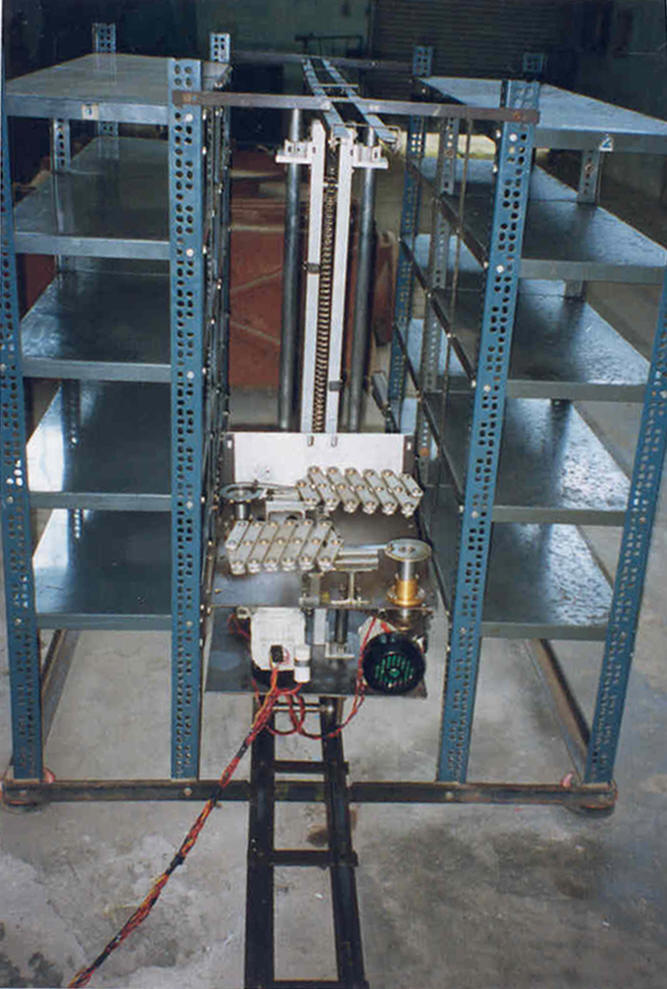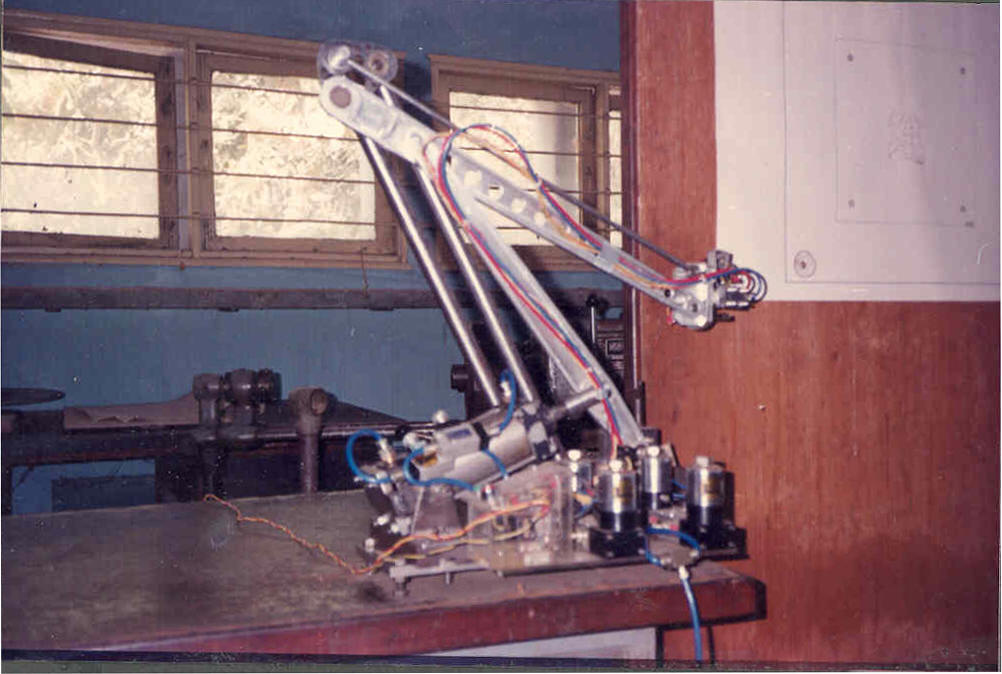|
Hydraulic Systems Even though oil
hydraulic systems are generally costlier than pneumatic systems,
they are attractive where large forces are required along with
fine control of speed. Their field of application is very wide,
ranging from simple hydraulic brakes used in automobiles to the
sophisticated actuating systems in aircrafts. They are used
virtually in every industry, such as:
a. Die casting machines in the
casting process
b. Presses for heavy duty metal
forming processes
c. Injection or
transfer moulding machines for plastics, tractors, earth
moving equipment, fork lifts, machine tools etc.
Electric Systems
These consist of electric motors or
electro-magnets for actuation. A variety of electric motors (AD,
DC, servo, stepper etc.) are available as rotary actuators. Even
though linear motors have also been developed, they are not yet
commercially available. Today, electronic controls of motors have
reached sufficiently high level of sophistication such that
speed-torque characteristics can be controlled and adjusted. For
linear actuators, conversion of rotation of motor through any
mechanical means (rack and pinion, screw and nuts etc.) can be
used.
Sensors (transducers) also
form a major part of electric LCA systems. A transducer converts a
physical parameter (temperature, pressure, velocity etc.) to an
electric signal which can then be used to control the actuator.
This signal, generally being feeble, is amplified and then used.
Switches, contactors, relays etc. are used to develop the circuit.
The electric circuit consists of two parts: (A) the actuator part
which consists of the electromagnets, motors, brakes etc. along
with safety devices like overload protections, (B) the control
part consisting of activating devices like start, stop push
buttons, limit switches, relays, timers etc.
Hybrid Systems
Having seen the mechanical,
pneumatic, hydraulic and electrical systems, it is easy to
understand the utility of a hybrid system.
|
Fig. 3 Automatic Storage & Retrieval
System
 |
In this, more than one type of system
is used and interfaced appropriately with another so that the
advantages of both are used, while ensuring that the disadvantages
are not detrimental to the functional requirements. Depending on
the systems that are coupled, these are called electro-mechanical,
pneumo-hydraulic, electro-pneumatic etc. Fig. 3 shows a simple
electro- mechanical system. There are storage shelves on both
sides of a Stacker Crane. The crane moves on rails and can
pick and place components on either shelf. By interfacing with a
P.C. every transaction is |
|
recorded so that inventory
status and control is very easy.
|
Fig. 4 Hydro-Pneumatic
Circuit
 |
Two typical examples are taken for clarifying
the concept of a hybrid system. Fig. 4 shows a
hydro-pneumatic circuit. The pneumatic system with a
double acting reciprocating cylinder has its piston rods modified
to act as plungers in cylinders of much smaller diameter, which
are filled with oil. Due to the smaller area, the oil pressure
becomes higher by the ratio of the area of pneumatic cylinder to
the area of the piston rod. The output from the oil filled
cylinders is diverted into a cylinder of large diameter. Since the
pressure is acting on its large area, the force becomes equal to
the pressure in the plunger-cylinder multiplied by area of the
output cylinder. The piston rod of this cylinder will thus give a
large force with corresponding reduction in displacement. This
system has the advantage of simplicity of the pneumatic system
coupled with the high forces developed by the hydraulic system.
Consider again the pick-and-place unit shown in Fig. 5 which is
operated with an electro-pneumatic system.
|
Fig. 5 Electro- Pneumatic Device
 |
The pneumatic part
provides the movements for the arm of the pick-and-place unit
whereas the electric circuit takes care of the control function.
The device uses a pneumatic system for actuating motions, whereas
the control system is electrical for quick and easy response. It
picks parts and transports them to a magazine location, where it
is dropped. These two examples indicate the variety of options
available in developing a hybrid system – their inherent
versatility makes it possible to build a system most appropriate
for a given application.
Use of Microelectronics in
LCA
The reliability of an LCA
system can be significantly enhanced by using Programmable Logic
Controllers (PLC) which can replace hardwired ladder logic. Use of
a PC can further enhance the capabilities of the PLC system by
storing data and using them as and when required. The input/output
ports are connected to the sensors and actuating devices.
Continue........ |
|